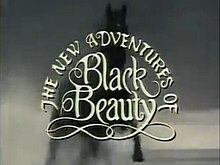Chapter 28: A Job Horse and His Drivers
byChapter 28: A Job Horse and His Drivers reflects a period in Black Beauty’s life where consistency and compassion are replaced by unpredictability. As a job horse, he is rented to a variety of temporary drivers, each with differing levels of skill, patience, and concern. Beauty’s nature is calm and responsive, which makes him a favored choice even for beginners. However, that same gentleness leads to regular misuse. Some drivers pull the reins so tightly that his mouth aches for hours. These men believe firm pressure shows control, unaware that constant tension causes more harm than help. For horses trained with subtle cues, this method becomes not only painful but deeply frustrating. Others, on the opposite end, hold the reins too loosely, offering barely any direction. Though Beauty can manage without much interference, he knows not all horses are as steady. In such cases, lax handling invites danger, especially on crowded streets or sloped terrain.
Beauty reflects on how different styles of driving often lead horses into bad habits that take weeks or even months to unlearn. A rough hand may teach a horse to pull away, while inconsistent cues make it anxious or confused. These habits, once ingrained, are difficult to reverse and often punish the horse more than the person who caused them. Squire Gordon had once said that to let a horse form a bad habit is a form of cruelty, because it burdens the animal with suffering later in life. Beauty now sees the wisdom in those words. When he worked under John, there was balance—firm but fair guidance and a deep understanding of what a horse needed. Now, with every new driver, he risks being misunderstood, mishandled, or outright ignored. For a horse who wants only to do his job well, this inconsistency wears on both body and spirit.
One particularly painful memory involves a man who chatted so loudly and carelessly that he never noticed Beauty limping. A small stone had wedged itself in his hoof shortly after they left the stable, causing discomfort with every step. Had the driver paid attention, he might have noticed the shift in gait or the uneasy way Beauty held his head. Instead, he continued talking, laughing, and flicking the reins, assuming all was well. By the time they stopped, the pain had worsened. Only then, when a bystander pointed out the limp, did the man investigate. Even so, he acted irritated, as if the stone were Beauty’s fault. This episode, while not the worst of his experiences, reminded Beauty how deeply animals rely on human observation and concern. A few moments of care could prevent hours—or even days—of suffering.
These experiences contrast sharply with those earlier days when someone like John would check the shoes before every journey and stop immediately at any sign of discomfort. Beauty never feared pain under John’s care, because it was clear he paid attention. That kind of trust builds a bond between horse and handler, allowing for smooth work and mutual respect. Under careless renters, that trust can’t form. The horse becomes just a means to an end—no more important than the cart it pulls. Yet Beauty holds onto the lessons he was taught: stay steady, listen carefully, and respond as best he can, even when the driver doesn’t deserve it. He knows that doing his part might save him from harsher treatment later.
This chapter is not just a series of complaints—it’s a measured reflection on how easily humans can shape, and often damage, the behavior of animals. Beauty doesn’t expect perfection, only mindfulness. The distinction between harsh and gentle handling may not be obvious to a passerby, but it’s deeply felt by the horse. Inconsistent drivers leave behind more than temporary discomfort—they leave confusion, fear, and mistrust. And once those emotions take root, it takes time and care to heal them. By recounting these varied encounters, Beauty urges readers to consider the unseen impact of their actions. A horse’s service may be silent, but it speaks volumes through its behavior. How it walks, listens, or flinches reveals more about the people behind the reins than many would care to admit.

